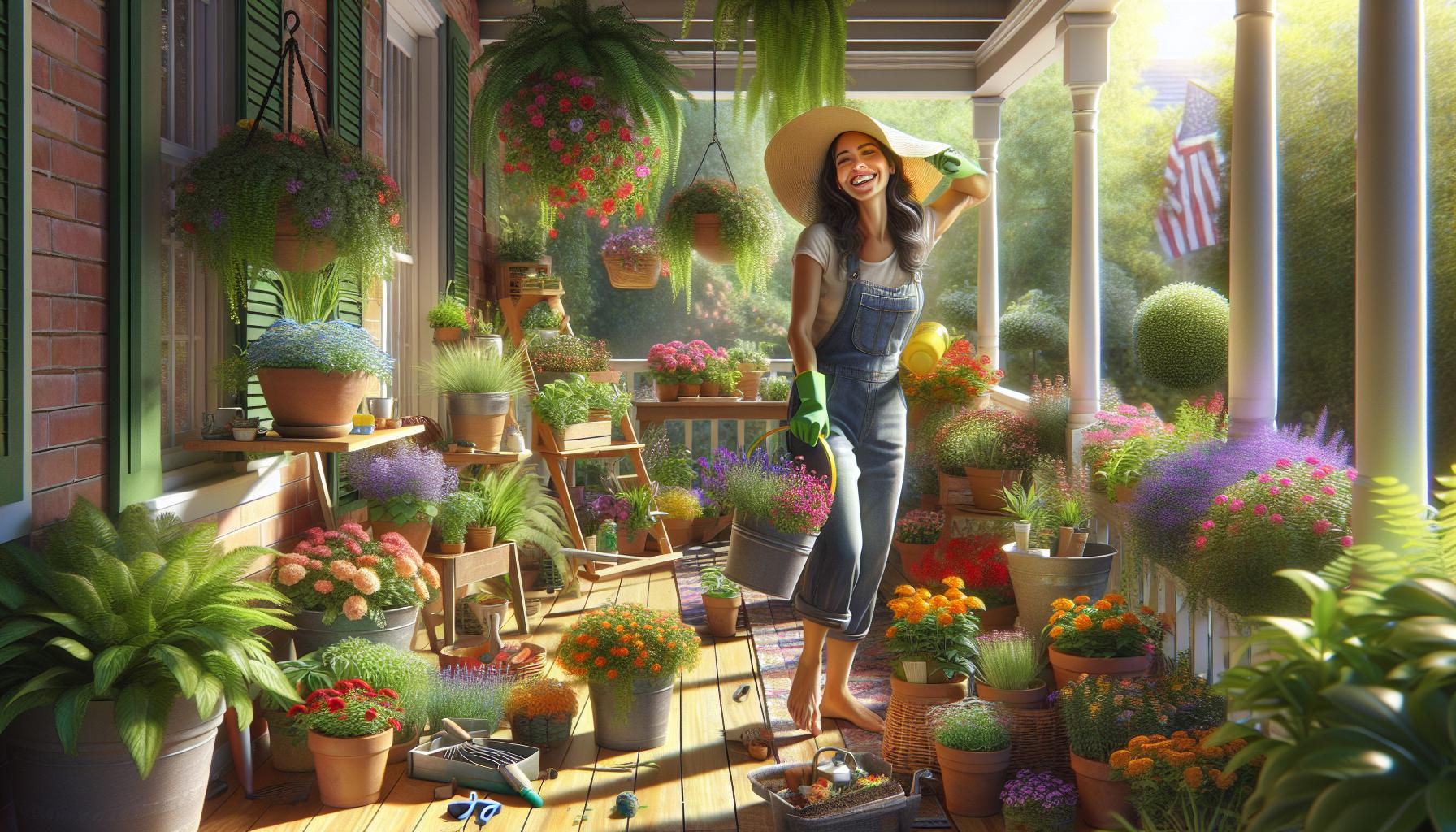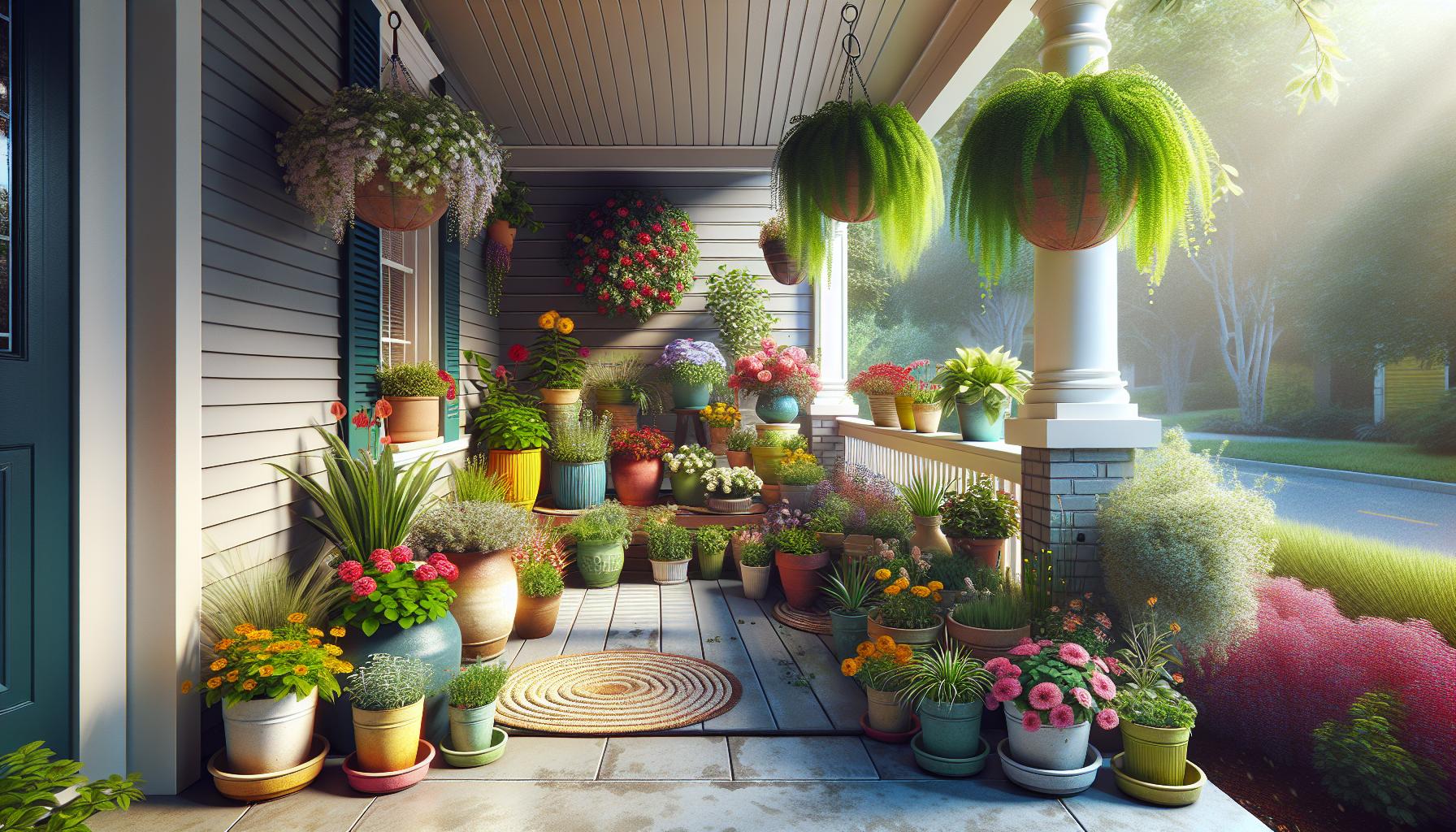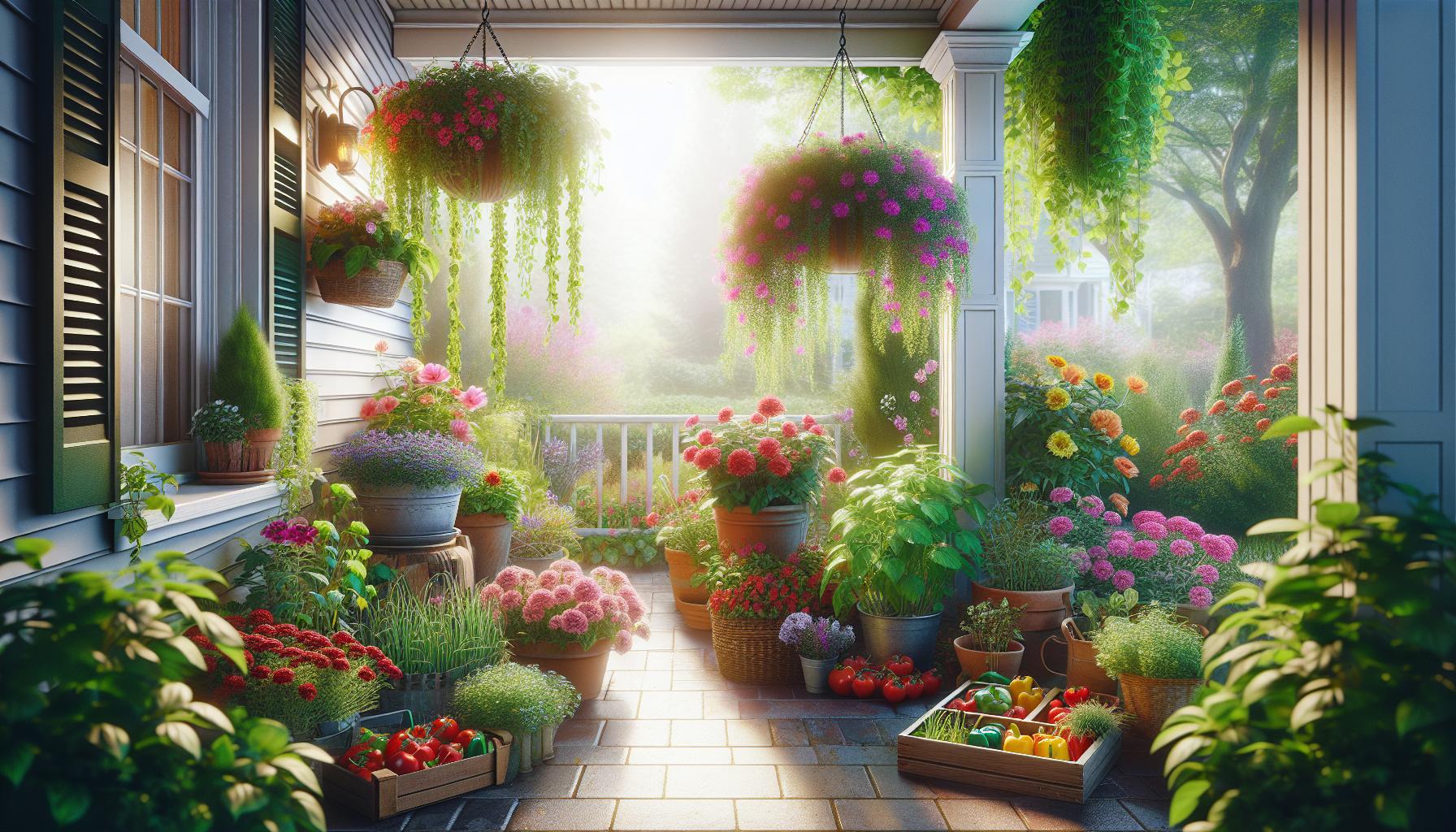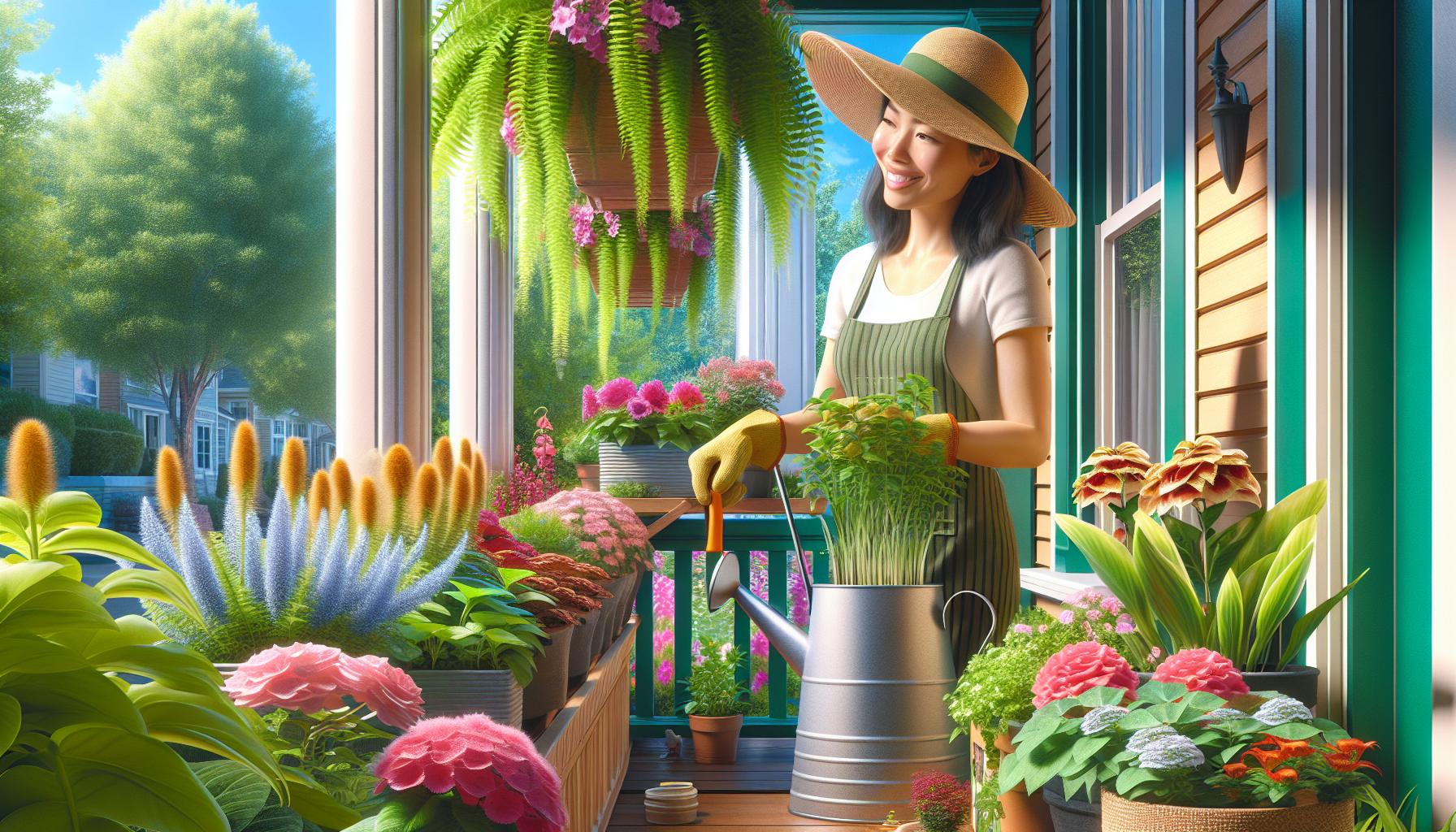Phone:
(701)814-6992
Physical address:
6296 Donnelly Plaza
Ratkeville, Bahamas.

I’ve discovered that transforming a simple porch into a thriving garden oasis doesn’t require acres of land or years of gardening expertise. As someone who started with just a few potted plants my porch has evolved into a vibrant space bursting with flowers herbs and even small vegetables.
Whether you’re working with a tiny apartment balcony or a spacious wraparound porch gardening in this unique space offers endless possibilities. I’ll share my tried-and-true techniques for creating a successful porch garden that fits your lifestyle and available space. From choosing the right containers to selecting plants that thrive in your specific conditions you’ll learn how to maximize every square inch of your outdoor living area.
Porch gardening transforms unused outdoor spaces into productive growing areas filled with plants tailored to your needs. I’ve discovered multiple advantages that make porch gardening an excellent choice for both novice and experienced gardeners.
Vertical gardening techniques maximize growing space in compact porch areas. I utilize hanging baskets for trailing plants like cherry tomatoes or strawberries, wall-mounted planters for herbs, and tiered stands that accommodate 12-15 small pots in the footprint of 2 square feet. Multi-level plant arrangements create visual interest while keeping walkways clear, making even the smallest porch functional for gardening.
A porch garden provides instant access to fresh produce steps from the kitchen. I grow compact vegetables like bush beans, lettuce greens, compact tomato varieties that yield 3-4 pounds per plant throughout the season. Kitchen herbs such as basil, thyme, mint, oregano thrive in 6-inch containers, providing fresh flavors for cooking while saving $4-6 per bundle compared to store-bought herbs. The convenience of harvesting fresh ingredients enhances meal preparation with minimal effort.

I’ve learned that successful porch gardening starts with careful planning of key elements like sunlight patterns, container choices, and spatial organization. Here’s what I discovered through my experience:
My porch garden thrives by matching plants with specific light conditions. I track sunlight patterns throughout the day using a light meter, measuring direct sunlight hours in different porch areas. South-facing porches receive 6-8 hours of direct sunlight, perfect for growing tomatoes, peppers or marigolds. East-facing locations get 4-6 hours of morning sun, ideal for leafy greens, impatiens or coleus. North-facing spots with 2-4 hours of indirect light work best for shade-loving plants like ferns, hostas or peace lilies.
I select containers based on plant root depth requirements and available porch space. Here’s a breakdown of container sizes I use for different plants:
| Plant Type | Container Depth | Container Width |
|---|---|---|
| Herbs | 6-8 inches | 8-12 inches |
| Leafy Greens | 4-6 inches | 12-18 inches |
| Tomatoes | 12-18 inches | 18-24 inches |
| Flowers | 8-12 inches | 10-16 inches |
My containers include drainage holes, lightweight materials for easy movement and self-watering features. I use plastic pots for moisture retention, terracotta for plants needing drier conditions and fabric grow bags for root vegetables. Each container sits on water-resistant saucers to protect the porch surface.

My experience with porch gardening has shown that selecting plants based on light conditions, space requirements, and maintenance needs creates the most successful garden. I’ve compiled a list of plants that thrive in porch environments.
Flowering plants add vibrant colors and fragrances to porch gardens while requiring minimal space. Here are proven options for different light conditions:
| Plant Type | Container Size | Light Needs | Harvest Time |
|---|---|---|---|
| Cherry Tomatoes | 5-gallon | Full sun | 60-70 days |
| Bush Beans | 12-inch deep | Full sun | 50-60 days |
| Leaf Lettuce | 6-inch deep | Partial sun | 30-45 days |
| Bell Peppers | 3-gallon | Full sun | 60-80 days |
| Herbs | 4-inch | Varies | 20-30 days |

My porch garden requires specific maintenance routines that change with the seasons to keep plants healthy and productive throughout the year.
I monitor soil moisture daily using my finger to test the top inch of soil, watering only when it feels dry. My self-watering containers with water reservoirs maintain consistent moisture levels during hot summer days. For fertilizing, I follow this schedule:
Water requirements by season:
| Season | Watering Frequency | Amount per Container |
|---|---|---|
| Spring | Every 2-3 days | 1-2 cups |
| Summer | Daily | 2-3 cups |
| Fall | Every 3-4 days | 1-2 cups |
| Winter | Weekly | 1 cup |
I maintain a pest-free environment through regular inspection and preventive measures. My integrated pest management approach includes:
I’ve transformed numerous porch spaces into stunning garden displays by implementing strategic design elements. My experience shows that creative design maximizes growing space while enhancing visual appeal.
Vertical gardening systems multiply growing space by utilizing wall-mounted structures such as:
Multi-level displays add depth to porch gardens through strategic placement techniques:
| Display Element | Height Range | Plant Capacity |
|---|---|---|
| Plant Stands | 24-36 inches | 4-6 plants |
| Step Shelving | 48-60 inches | 8-12 plants |
| Corner Units | 72-84 inches | 10-15 plants |
| Rolling Carts | 30-40 inches | 6-8 plants |
Starting a porch garden is one of the most rewarding ways to bring nature closer to home. I’ve found that with proper planning and care even the smallest porch can become a thriving garden space that produces beautiful flowers fresh herbs and nutritious vegetables.
Whether you’re a busy professional looking to grow a few herbs or an ambitious gardener ready to maximize every inch of your porch the techniques and tips I’ve shared will help you create your perfect outdoor oasis. Remember that success comes from understanding your space choosing the right plants and maintaining them with care.
I encourage you to take that first step today. Your dream porch garden is just a few containers away from becoming reality.